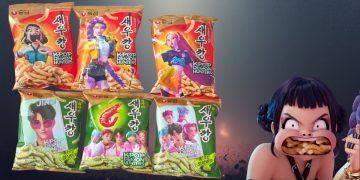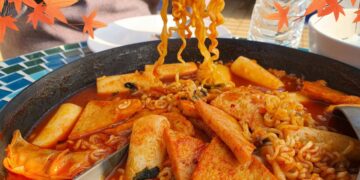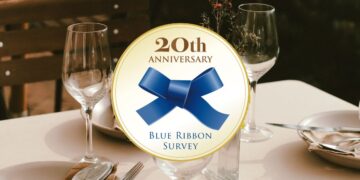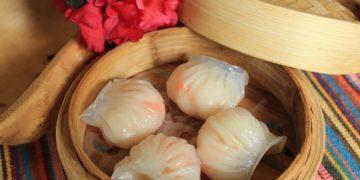Last Updated on 2 years by admin
Incheon is a city in South Korea that borders the capital of Seoul, and this city has been a transportation hub for a long time. This city is famous for its vivid culture and tourism, its magnificent, modernized Incheon International Airport, casinos, golf course, and many more. As this city is known as the transportation hub, the food here must be as amazing as the beauty of the city. The seafood dishes are to look out for as this city is the home to the popular Incheon Fish Market. There are a few streets that are filled with mesmerizing local foods; let’s go through a few famous food streets of Incheon.
Yeollakgol Chueo Maeul (Loach Village)
Yeollakgol Chueo Maeul is a unique culinary strip surrounded by a natural community that exudes loving compassion. A village in Unyeon-dong, Incheon, is created by more than 12 restaurants serving crushed loach soup. The loaches were found in an abundant form in the rice fields of the cultivation regions. So, the villagers made a dish out of it and loved to have it in the form of soup. The current Chueo Maeul was created as word of the soup’s flavor spread abroad. This soup is said to be very effective in preventing the aging of the skin and has many other health benefits.
Baendaengi Hoe Muchim Street
This is one of the food streets in Incheon that is famous for its Baendaengi, it’s a small palm-sized fish that has a rough appearance and very ugly, miserable features with pale eyes, but they taste delicious and wonderful. Restaurants near Yeonan Pier started to draw customers as Baendaengi dishes acquired popularity.
The chewy texture and fleshy meat of the Baendaengi make them suitable for eating either raw or cooked. Griddled meat is likewise very well-liked.
The fish are most flavorful during the breeding season, which lasts from April until mid-July, as they gain weight and become fat and fleshy. The most delicious street food here is Baendaengi Hoe muchim, which combines Baendaengi with veggies and a hot sauce; it’s a delight to have a taste of it.
Web-foot Octopus Street in Manseok-dong
The Manseok and Bukseong Pier, located nearby to this street, joined hands and established this wonderful Web-foot Octopus Street. Web-foot Octopus eateries started to sprout when an overpass took the position of a crosswalk that joined Jung-gu and Dong-gu.
During March and April, as the water temperature rises, the fish swarm to the west coast to feed on the shrimps. The fish’s chewy, sweet flavor is at its peak at this time. The most common type is one that has been stirred or parboiled with red chili pepper paste and vinegar.
Songdo Blue Crab Street
In Yeonsu-gu, about 20 blue crab eateries are gathered around Songdo Amusement Park, making it one of the best food streets of Incheon. This street began a long time back when the stalls there were selling clue crabs at the center of the amusement park. And slowly, people began to prepare dishes out of the blue crabs right there, and this is how Songdu Blue Crab Street came into existence.
Much different variety of blue crab recipes is now available here, including spicy blue crab stew (kkotge-tang), braised blue crab (kkotge-jjim), seasoned raw crab (saeng-ge muchim), spicy blue crab with vegetables (kkotge bumbeok), soy-sauce-marinated crab (ganjang-gejang), and spicy marinated crab (yangnyeom-gejang).
The restaurant people here freeze the blue crabs that are harvested in its peak season so the people coming over there can enjoy the taste of the fresh crab dishes all year round.
Multeombeongi Street
Monkfish is known by the nickname Multeombeongi. Because monkfish lack meat and are unsightly, fishermen used to discard them in their nets. In true Korean, “teombeong,” means they made a splash when they were thrown aside, “mul” is the word for water and the final “I” functions as a form of postposition for an impersonal subject. This is how this street got its name and began its days of glory. This was just a normal food street until a shop named “Seongin Multeombeong” made a special dish called the hangover soup, which led to the tasteful dishes today on that street. This street started to gain fame in the 1980s. A must-try dish is Fresh monkfish.
Related Posts
15,108 total views, 4 views today

















